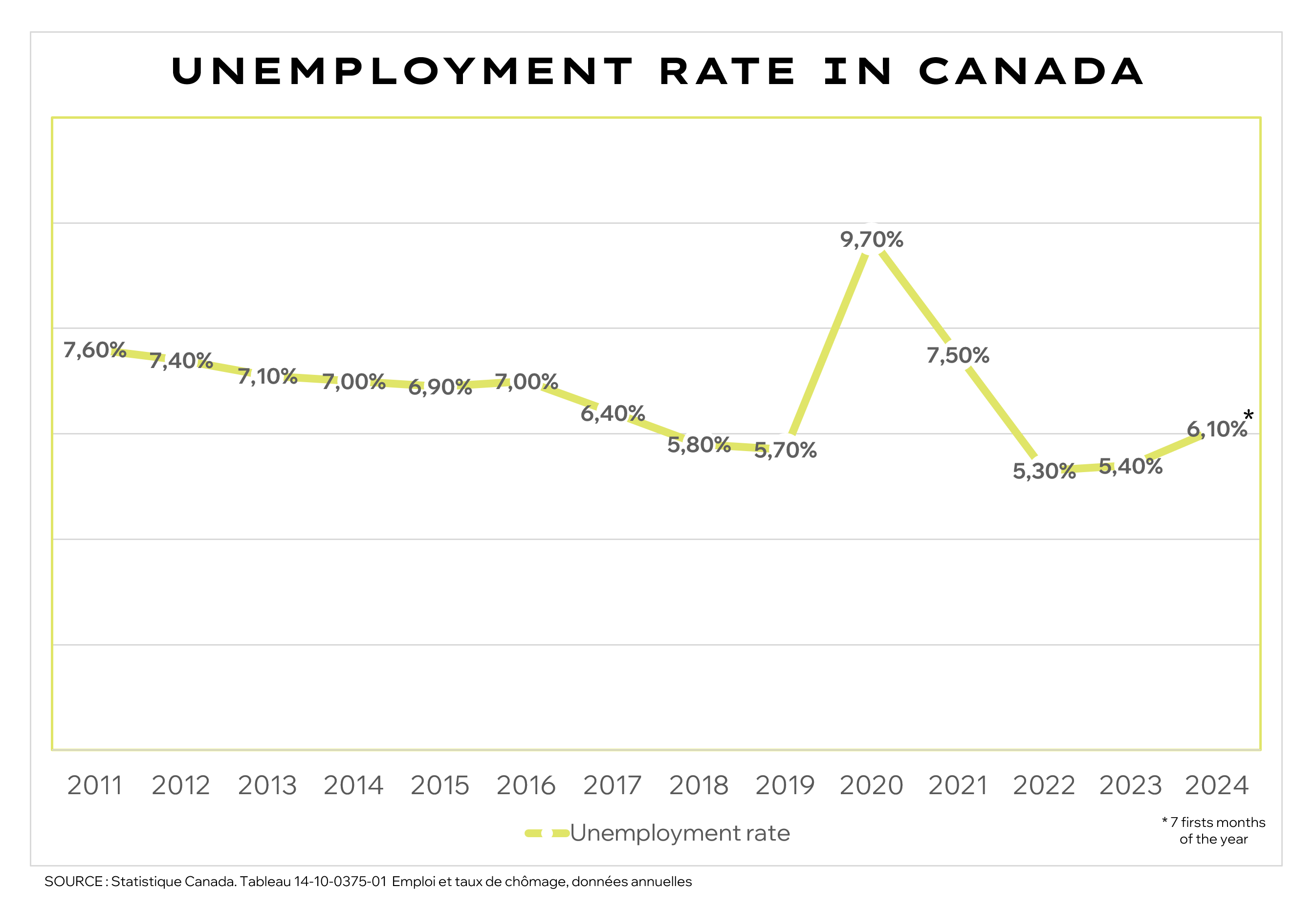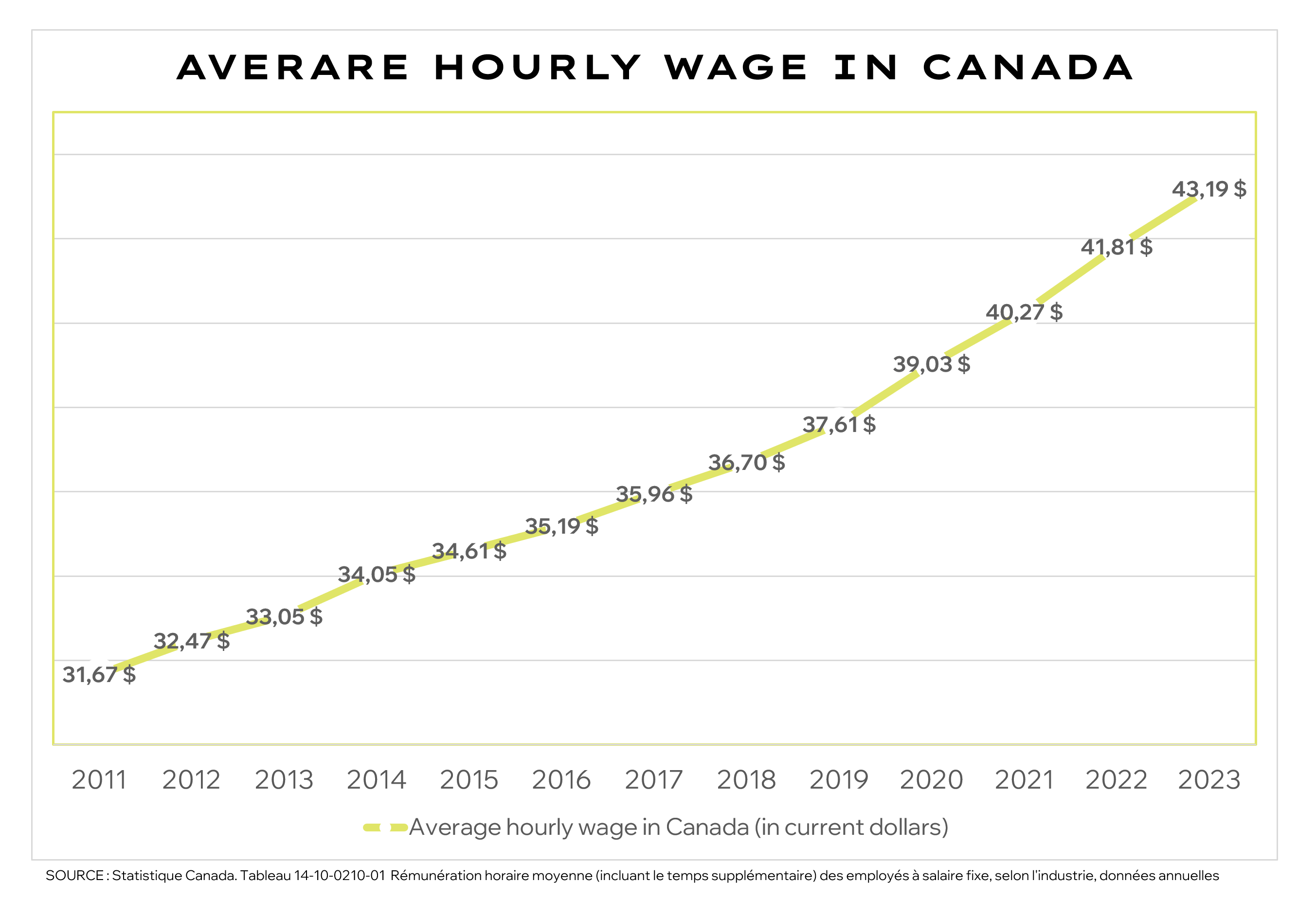In this article, we’ll cover 10 HR recommendations for 2024:
- Assess your workforce needs now
- Boost team productivity with new technologies
- Prepare for the arrival of AI in your industry
- Learn how to attract and retain employees
- Review your salary scales
- Revisit your remote work policy
- Focus on D.E.I.
- Implement systems to modernize your recruitment processes
- Stay informed about Law 25 and data protection
Discover 10 recommendations to consider in your 2024 strategic planning
Fall is a particularly busy time in terms of recruitment. Several hiring processes resume after the summer period. This year, this period coincides with an uncertain economic period.
Although economic recovery has not yet taken place, strategies can be put in place now to prepare your business.
In the current context, and to prepare you for the impending economic recovery, we have formulated 10 HR recommendations to integrate into your strategic planning.
These 10 HR recommendations are the first edition of a tool that we update annually, in order to support business leaders in their HR ans recruitment planning. To view the current year's edition, click here.
1. Anticipate the economic recovery: assess your workforce needs
In times of economic downturn, entrepreneurs often have the reflex to make layoffs to reduce their costs. We saw that during the pandemic. However, this means that when the economy resumes, these businesses are not ready and miss out on the growth opportunities associated with the recovery.
If your business is slowing down, it's important to remember your long-term workforce needs. Although the job market is currently less stretched, the labour shortage will still be present when the economy rebounds, and if you are not ready, it will be difficult to recruit the employees you need for your growth.
On the other hand, if your business is in growth mode, you are probably already in the process of recruiting for your short-term workforce needs. In fact, you may have noticed that it is easier to recruit than in 2021-2022, but that recruiting the right employee is still difficult.
Although the unemployment rate in Canada increased in 2024, it is still at an all-time low. The most successful employees therefore remain open to new opportunities for a short period of time, as they quickly find a new job.

Recommendation: Plan your workforce needs over the next 12 months and set up a recruitment schedule with your HR team. Remember to take into account that it takes 2 months to recruit an employee. And if we add the minimum 2 weeks' notice, as well as integration and training time, it takes around 6 months before an employee is effective.
If you are growing rapidly, take the time to assess whether recruiting will be sufficient to meet your needs or if acquiring a competitor could be a more effective solution to meet your workforce needs.
2. Unleash the full potential of your business: optimize the productivity of your teams
From 2019 to 2023, productivity growth was 0% in Canada!
Several factors explain this lack of growth; in particular, the fact that Canadian businesses invest little in tech, in machinery and training, compared to other countries.
If your business is slowing down, now is the perfect time to invest in improving productivity.
Indeed, by not being in a peak period, you can afford to review your processes and free up hours of work for the training of your employees or for the implementation of new systems or equipment.
For example, adopting new technology can automate repetitive tasks, in order to free up your teams for higher value-added tasks. The implementation of AI and robotization could also automate the tasks of positions for which you have difficulty recruiting, thus reducing the impact of the labor shortage on your business.
Modernizing your machinery can also reduce operating costs while increasing the quality and speed of production.
Investing in employee training can make your teams more productive, but also more engaged, which helps to reduce your turnover rate.
By taking these steps now, you are positioning your business to not only weather the current productivity crisis, but also to seize new growth opportunities when the economy recovers.
Recommendation: Invest in your productivity now by updating your equipment, machines, software, and systems. Revise your processes and work organization, and automate recurring or ineffective tasks in order to enrich the work and productivity of your employees. This will not only optimize the productivity of your business, but you will also improve the engagement of your employees.
3. Get ready for the democratization of artificial intelligence
Like it or not, artificial intelligence is already being used in several industries. Even if this is not currently the case in your industry, know that it happens quickly.
It is therefore wise to set up a monitoring system to stay up to date on innovations concerning artificial intelligence and to understand how this technology could be useful in your business context, currently or in the future.
Like automation, integrating AI into your business could make your employees more productive by reducing repetitive tasks.
It could also reduce or change your recruitment needs when the labour shortage kicks in again.
In addition, artificial intelligence can improve your business intelligence, by providing advanced analytics capabilities. For example, it could allow you to identify trends and anomalies in data that traditional business intelligence tools might miss. AI also makes it possible to predict future results based on historical data.
And even if these uses do not currently apply to your business context, it is important to prepare for the future and to start thinking about how you can integrate AI into your business infrastructure.
Indeed, the implementation of a new technology always requires a delay in integration before achieving a significant gain in productivity. This is especially true with AI and Deep Learning, which requires structured and quality data to become effective.
Recommendation : Prepare for the arrival of artificial intelligence in your company by setting up a monitoring system. Also, think now about how AI could be integrated into your systems, and prepare accordingly:
- Are you collecting data that is relevant to robot or AI learning?
- Does your current software allow the integration of artificial intelligence functions?
- Are your employees comfortable with artificial intelligence? Are they supervised in the use of AI?
These questions should guide you in your next decisions related to technology and work organization. Indeed, artificial intelligence is a promising tool, but one that must be thoughtfully integrated into your strategic planning.
4. Define the ideal employee profile for your business
Whether it is when evaluating your current employees, or as part of a new hire, it is important to establish the ideal employee profile for each position. However, this approach must be preceded by an analysis of the management style in your company, since it directly influences productivity and turnover rate.
The success of your business depends not only on the technical skills of your employees, but also on their alignment with the culture and leadership style in place in your company.
Indeed, managerial behaviors and practices have a major impact on working methods, team engagement and talent retention.
For example, if you want to hire a candidate who has a great deal of autonomy and who wants to have a lot of flexibility in their work, make sure that this fits with the culture and behaviors in your company. A supervisor who practices micromanagement may quickly discourage this type of profile, which could lead to a departure.
Recommendation: Before defining the ideal employee profile, first diagnose the management style in place in your company.
Use tools like our Self-assessment of a leader as well as psychometric tests, professional references or management-type evaluations to complete your analysis.
If you notice a discrepancy between good leadership practices and the current behaviors of your leaders, it is important to address the situation before proceeding with new hires.
In fact, a change in leadership may be necessary to align corporate culture with your goals.
Once you have leaders who can motivate and coach their teams through levers such as autonomy, trust, and skills development, you can establish an ideal employee profile to complete the team. Doing so can certainly allow you to maximize productivity and reduce your turnover rate.
5. Know how to attract and retain your employees
The average turnover rate in Quebec was 24% in 2020, but according to the Ministry of Economy and Innovation, an ideal turnover rate would rather be between 4 and 5%.
If you have a high turnover rate, you need to ask yourself these questions:
Do you know why your employees leave?
To get answers to this question, it is important to conduct exit interviews.
Do you know why your employees stay with the company?
This question is rarely asked in companies, and yet it is important to know what are the attractive elements that retain your employees, since these can also be used to attract candidates.
As executive search specialists, we note that the elements particularly appreciated by employees and job seekers are:
- Flexibility and autonomy
- Measures that allow work-life balance
- A fair and competitive salary in relation to the market
- Values of openness, inclusion and awareness of environmental issues
- Professional development and training opportunities
Recommendation: Conduct interviews with current and departing employees in order to fully understand the elements of satisfaction and dissatisfaction in your business. At all times, it is relevant to have this information to adjust your business strategy and internal policies. In addition, highlight your distinctive elements in your job postings and on your various platforms, in order to attract candidates and build your employer brand.
6. Competitive salary: review your salary scales
Between 2020 and 2023, wages grew strongly to catch up with inflation. If you haven't revised your pay scales in several years, it's possible that they're no longer in line with the market, and that's causing you problems attracting and retaining talent.

Again, although the labour shortage is less severe right now, it is not over, and the competition for skilled labour will once again be fierce when the economy recovers.
Recommendation : Consult Quebec.ca and the various salary guides and make sure that your salaries are not only aligned with the market, but that they also reflect the value and skills of your employees. Take the time to review salaries, but also your entire salary structure in order to remain competitive.
7. Write or review your remote work policy
As we know, remote work was widely popularized during the pandemic. But gradually, several companies asked their employees to return to the office,
As recruiters, we see that employees are still looking for flexibility. So, if you offer a combination of remote and office work, you will have an easier time attracting and retaining your employees. Promote this flexibility in your job offers to attract talent.
Recommendation: Make sure you have a clear remote work policy. To write this policy, assess the needs of your employees and your business as well as the feasibility for each position. Your remote work policy should be clear and include your expectations, as well as all the criteria necessary for remote work.
8. Focus on diversity, equity, and inclusion... for real
Today, young people are looking for work environments that are open to differences and diversity, even if they are not from a minority. Therefore, the image and values that your company conveys are important.
In addition, whether you are in a conventional environment or not, society is open to differences, and new situations could arise in the workplace, since people from minorities dare to assert themselves more and more.
It is therefore important to have an inclusion policy, allowing you to know how to avoid discrimination and how to react in situations of conflict or harassment.
Recommendation: According to the CNESST, the employer has an obligation to take appropriate measures to prevent harassment in the workplace. Complaints concerning racism, sexism, homophobia, transphobia, etc., must therefore be taken seriously and be framed by an internal policy.
If you don't already have mechanisms in place to prevent discrimination, it might be a good idea to hire a DEI consultant. This specialist will be able to ensure that you comply with diversity, equity, and inclusion laws. He or she can also help you build a guide on which to base yourself in judging fair and proportionate answers for each situation.
It's important to remember that focusing on diversity, equity, and inclusion doesn't just mean sharing these values with your teams. Adopting an inclusion policy will have an impact on your internal processes; in particular on the adaptations to put in place in your workplace, on your recruitment processes, on your employee evaluation processes, and on the analysis of your complaints.
For useful resources, check out the INRS equity, diversity and inclusion toolkit or consult an DEI expert.
9. Modernize your hiring processes
In 2024, the employee experience and the candidate experience are of paramount importance. For your candidates to have a positive experience and to maintain a good image of your company, it is therefore relevant to structure your recruitment processes.
Several systems exist to effectively follow up on applications received by your company. These software or systems, called ATS, allow your recruitment team to be more effective in following up with each candidate, but can also save you time in the future.
Indeed, by entering the history and all the relevant information into an ATS, you may be in a position to call back candidates for a future position, three, six or even twelve months later. It may even save you from having to start a new recruitment process completely in some cases.
Having an ATS in which you document why you are or are not selecting an application could also protect you, if an investigation were carried out concerning a candidate who was not selected. It is also important for your business to have proof that there was no discrimination in your process.
Recommendation: Set up a system to properly document and track each application received in your company. Remember that offering a positive experience to all candidates who contact you will always be a win in the long run, as it will allow you to maintain a strong employer brand and thus facilitate future recruitments.
10. Law 25 and data protection: get ready for the future
With the rise of artificial intelligence, automation and several other technologies, data protection will certainly be a very present issue in the coming years. Law 25 has also gradually come into force in Quebec, and your company already has several obligations to comply with as of today.
Obviously, you've probably already thought about updating your privacy policies and putting robust systems in place to manage your customers' personal information. But do you have the same measures in place to protect the data of your employees and candidates?
Data protection affects all the personal data you collect, regardless of the context and the reason.
Recommendation: Be proactive by adapting your policies and systems to properly protect all the data you collect. Also, take the time to train your staff on data security best practices.
Do you have any questions or have you adopted one of our HR recommendations? Tell us about your experience!
By email: info@thorenstalents.com
Montréeal: 514-842-7846
Drummondville: 819-445-7846
Toronto: 613-699-0021
Follow us on LINKEDIN







